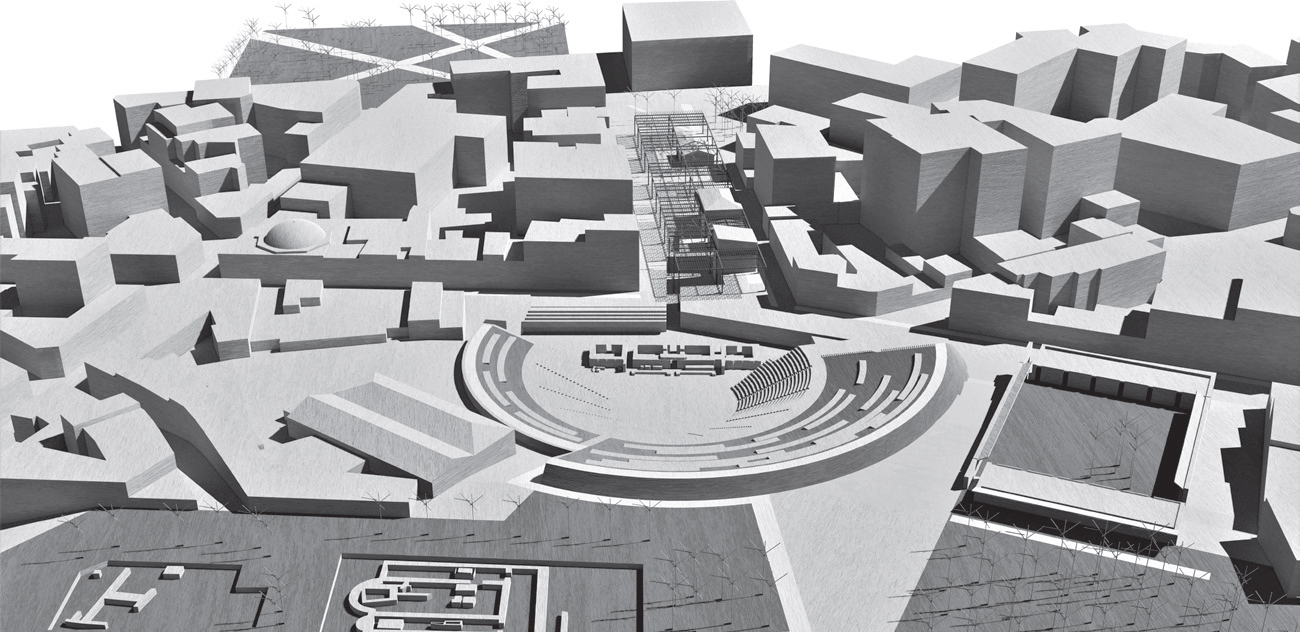U+D urbanform and design n. 20, 2024
Alessandro Lanzetta, Manuela Raitano, Federico Di Cosmo, Angela Fiorelli
The Mediterranean archaeological
nuclei as condensers of the territory signs. The case of Larissa in Thessaly
Click here A Lanzetta M Raitano F Di Cosimo A Fiorelli

Abstract
This paper presents the results of a design proposal
developed for the city of Larissa, in Thessaly,
on the occasion of an International Ideas
Competition sponsored by UIA.
The work we present starts from a basic assumption:
that archaeological remains still constitute
the “condensers” of historical signs on territorial
scale. Signs capable of demonstrating that territory
and city were originally part of the same
system, and that they can therefore, once again,
develop significant relationships.
Starting from this belief, our proposal pursued a
dual objective: on the one hand, re-centering the
archaeological area with respect to the city, as
an active part of urban life; on the other, at the
same time, re-centre the city itself with respect
to its territory, reactivating the relationships,
now hidden, between the historical-archaeological
nucleus and the valley of the Peneus river.
Working simultaneously on both the urban and
landscape scales, we have therefore tried to
broaden the basic goals of the project, including
the valorisation and the integration between city
and territory. The result was a design aimed at
reconnecting the archaeological nucleus with
the rest of the urban body and with the river
valley.
In conclusion, the case study we present aims to
demonstrate that the architectural project on
archaeological areas can pursue “large-scale”
objectives, thus becoming a driving force for
projecting the urban landscape heritage within
the territorial ecological networks, through a
system of signs that activate the symbiosis of
ancient cities with the original places of their
foundation.